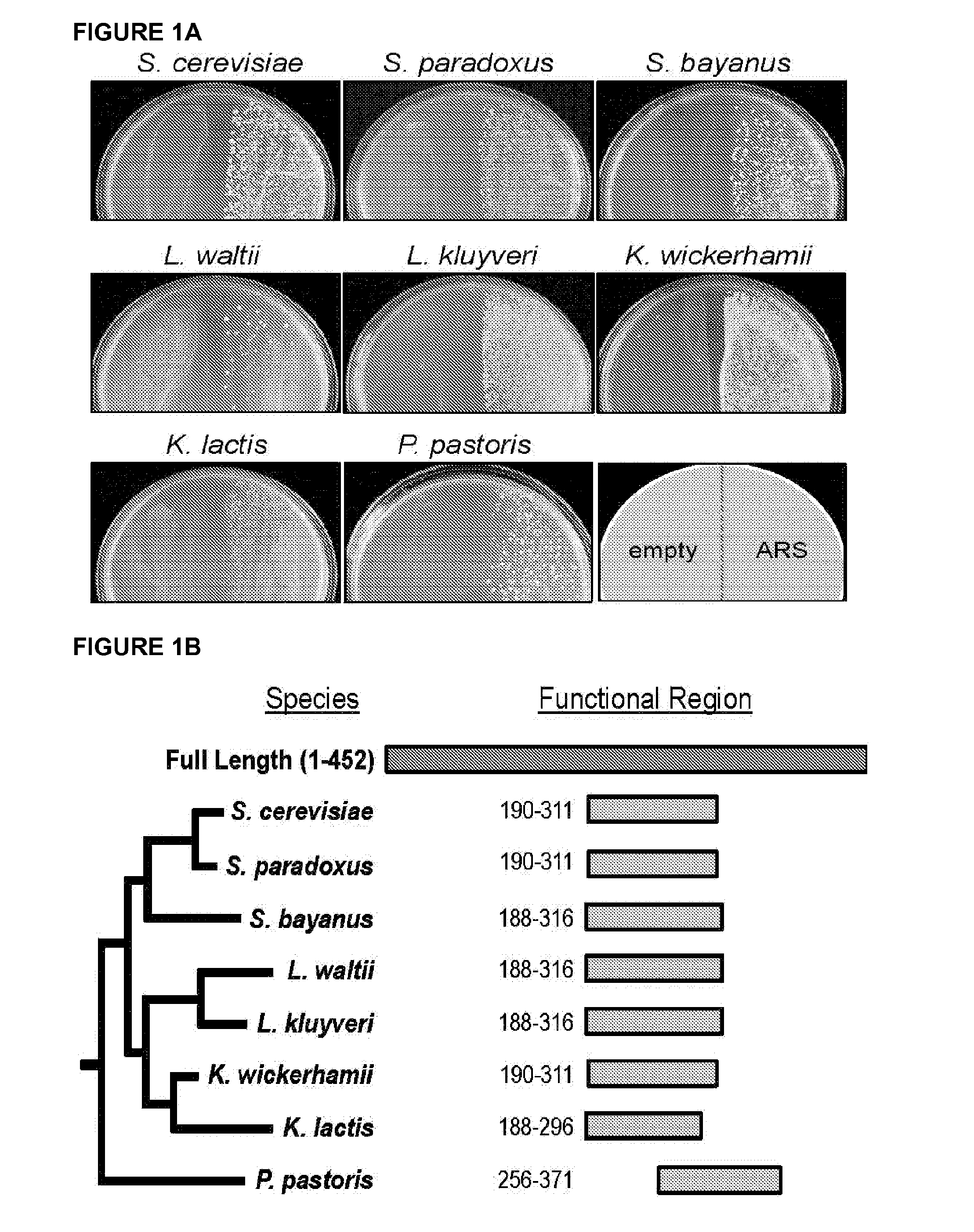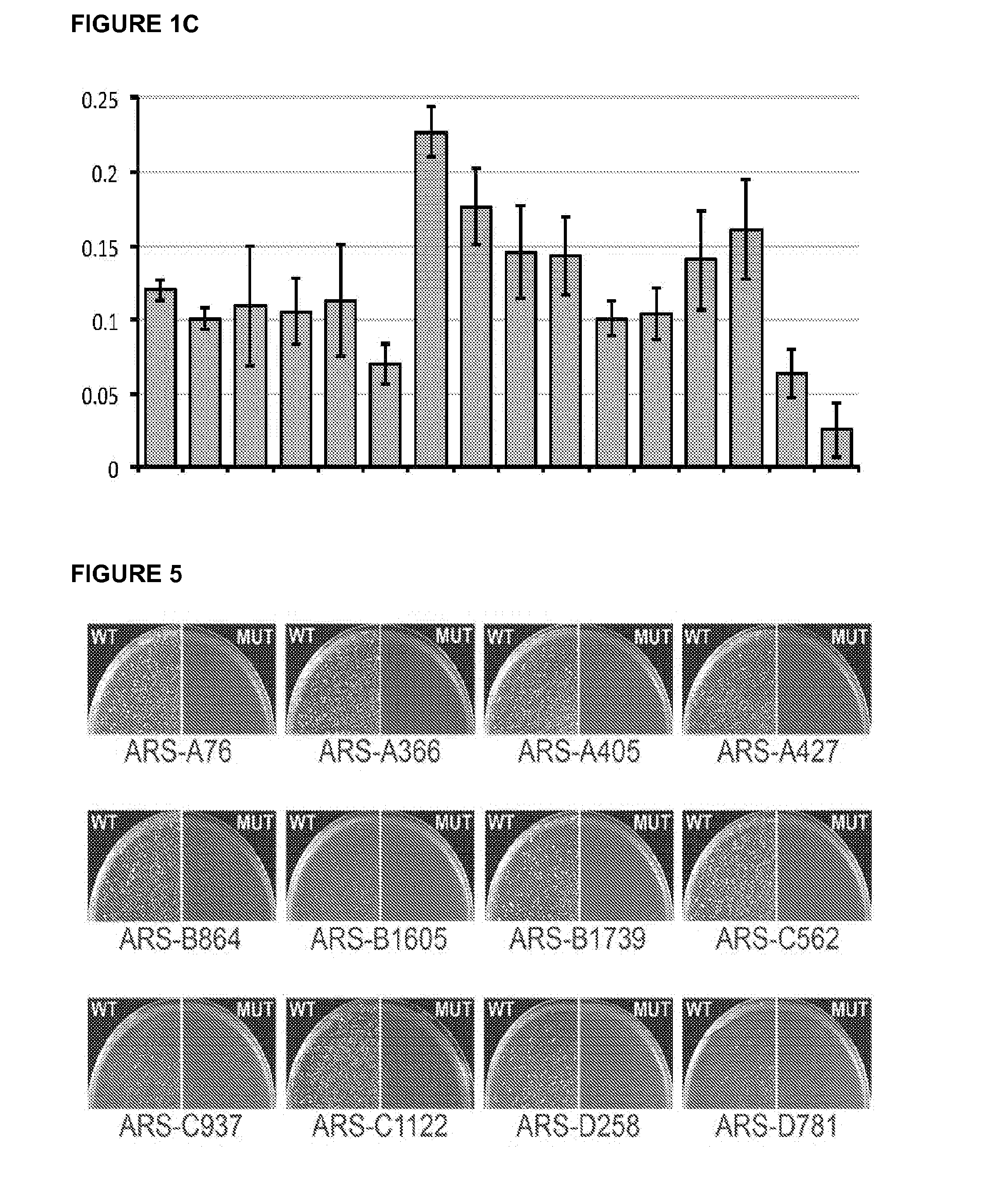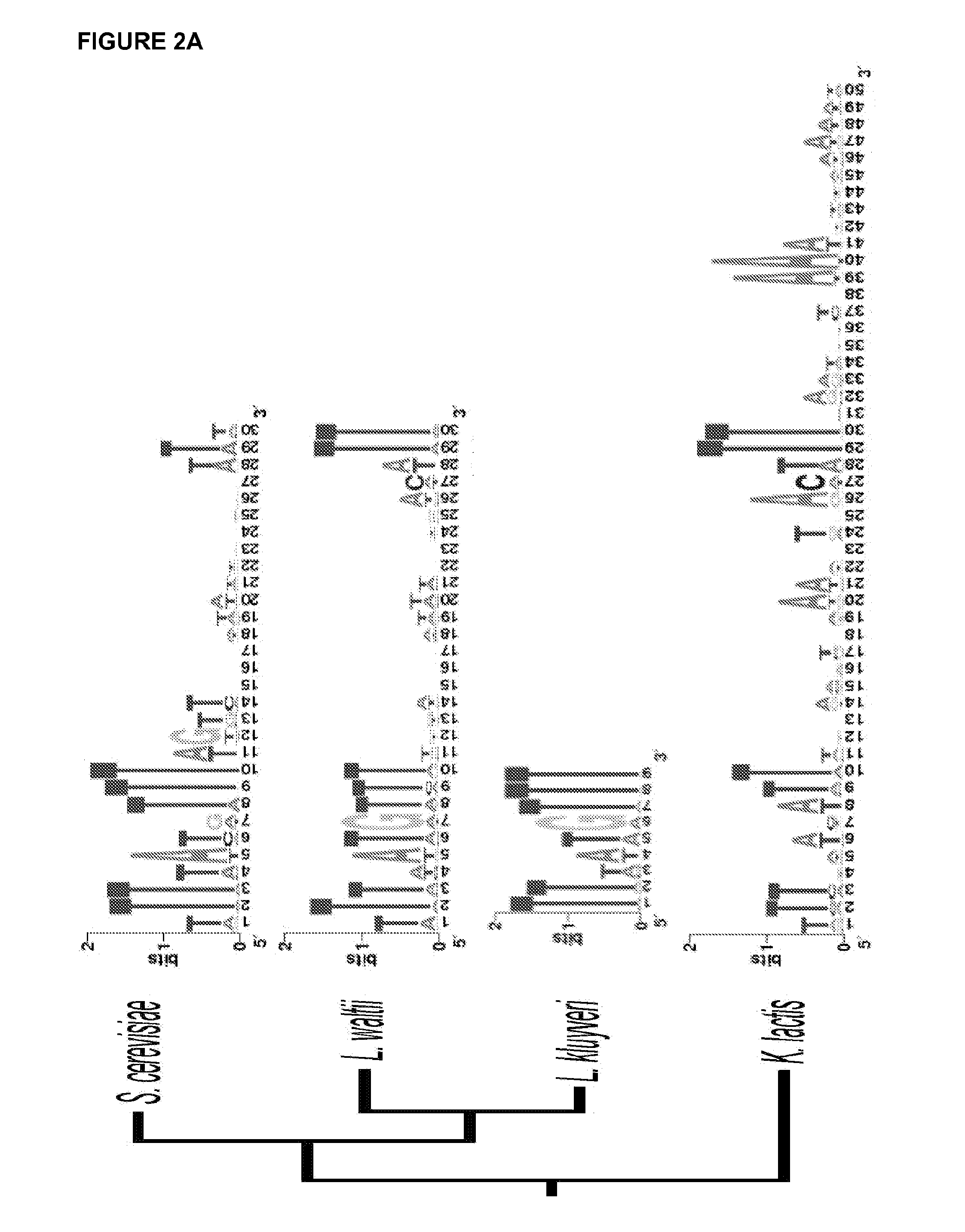Pan-yeast autonomously replicating sequence
a technology of auto-replicating sequences and plasmids, applied in the direction of biochemistry apparatus and processes, microorganisms, organic chemistry, etc., can solve the problems of plasmid loss during culture growth, limited current ars modules, and low efficiency, and achieve the effect of fast ra
- Summary
- Abstract
- Description
- Claims
- Application Information
AI Technical Summary
Benefits of technology
Problems solved by technology
Method used
Image
Examples
example 1
Autonomously Replicating Sequence for Use in a Wide Range of Budding Yeasts
[0079]This example describes a short ARS sequence that functions in at least 10 diverse species of budding yeast. These include, but are not limited to members of the Saccharomyces, Lachancea, Kluyveromyces, and Pichia (Komagataella) genera spanning over 500 million years of evolution. In addition to its wide species range, this ARS and an optimized derivative confer improved plasmid stability relative to other currently used ARS modules.
[0080]DNA replication is an essential function of cellular biology. It is highly regulated at the initiation stage that occurs at loci termed replication origins. Yeast replication origins retain their initiation activity in a plasmid context allowing autonomous episomal plasmid maintenance (Stinchcomb et al. 1980). This cis-acting autonomously replicating sequence (ARS) function has been useful for both understanding the basic science of DNA replication (Nieduszynski et al. ...
example 2
Optimizing Replication Origin Activity in the Methylotrophic Yeast Pichia pastoris
[0111]This example comprehensively profiles replication origin location, structure, and dynamics in the methylotrophic budding yeast Pichia pastoris (Komagataella phaffii) [31, 32] using a number of massively parallel sequencing techniques. In addition, we generated a genome-wide profile of nucleosome occupancy. The findings show that this yeast, which is commonly used for industrial production of recombinant proteins [33], employs at least two distinct types of DNA sequences to initiate replication. Approximately one third of P. pastoris ARSs require a G / C-rich motif that closely matches one form of the binding site of the well-studied Hsf1 transcriptional regulator [34]. The remaining origins use A / T-rich sequences for initiation. Genome regions near G / C-rich origins replicate significantly earlier than regions near the other class of origins and have a unique pattern of nucleosome organization. The...
PUM
 Login to View More
Login to View More Abstract
Description
Claims
Application Information
 Login to View More
Login to View More - R&D
- Intellectual Property
- Life Sciences
- Materials
- Tech Scout
- Unparalleled Data Quality
- Higher Quality Content
- 60% Fewer Hallucinations
Browse by: Latest US Patents, China's latest patents, Technical Efficacy Thesaurus, Application Domain, Technology Topic, Popular Technical Reports.
© 2025 PatSnap. All rights reserved.Legal|Privacy policy|Modern Slavery Act Transparency Statement|Sitemap|About US| Contact US: help@patsnap.com



